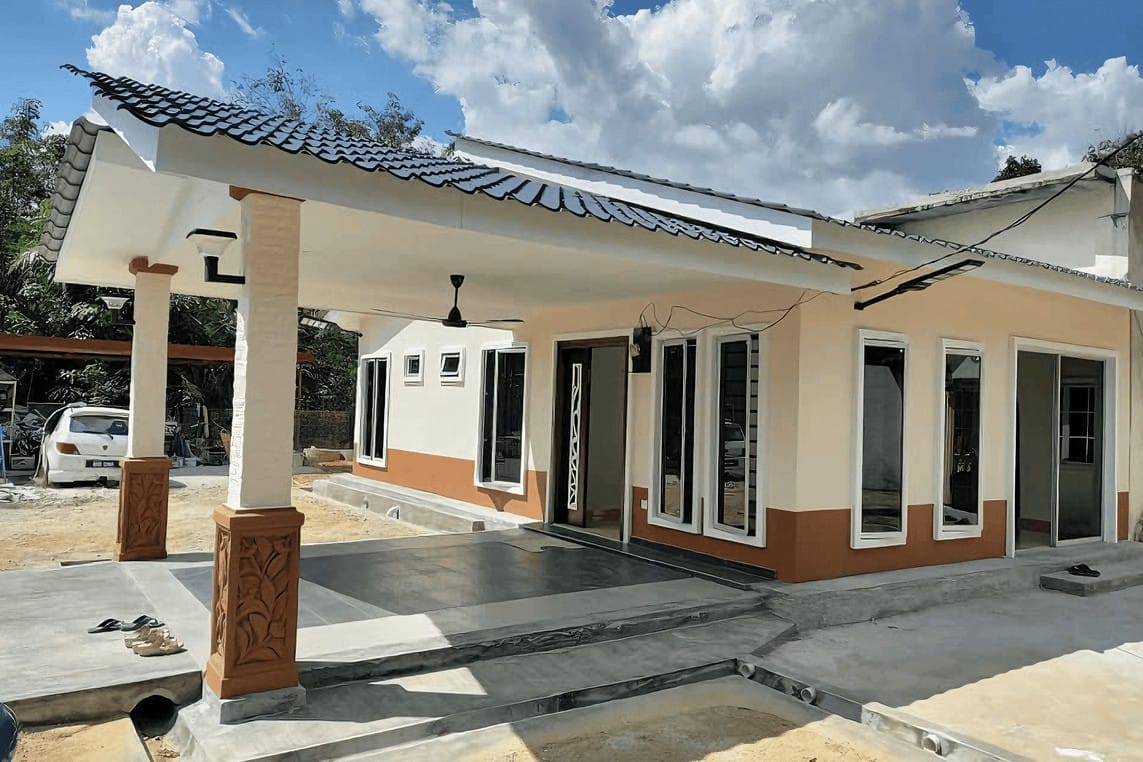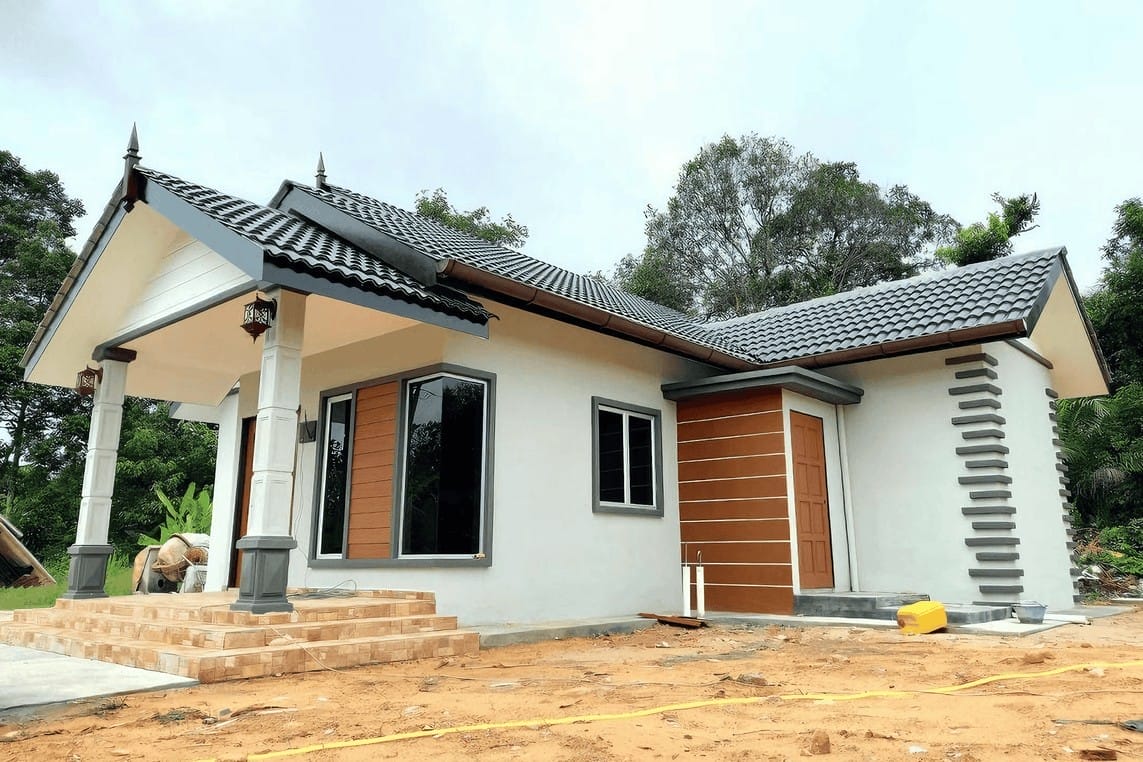Sure! Here’s an introduction for your article:
So, you’re ready to kick off that home renovation project or finally build your dream space? Exciting times, right? But before you dive headfirst into the world of hammers and paint swatches, there’s one crucial piece of the puzzle you can’t overlook: finding the right contractor. Navigating the contractor scene in Malaysia can feel a bit like walking through a minefield—there are amazing deals, hidden costs, and everything in between. But don’t sweat it! We’ve compiled 5 insider tips to help you snag the best deal without compromising quality. Whether you’re renovating your cozy apartment or embarking on a major construction project, these strategies will arm you with the knowledge you need to make informed decisions and score the best bang for your buck. Let’s get started!
—
Feel free to adjust any part to better fit your voice or style!
Understanding the Local Market Dynamics
When diving into the Malaysian construction scene, it’s key to recognize how local market factors can shape your project and budget. From the bustling city centers to the tranquil rural areas, each locale has its own business rhythms and contractor preferences. Factors such as demand levels, material sourcing, and labor costs fluctuate, drastically influencing the overall pricing and availability of contractors. Understanding these elements can help you make informed decisions and negotiate better deals.
It’s also worth considering the cultural nuances that come into play within the contractor-client relationship in Malaysia. Personal connections and social proof often weigh heavily in the decision-making processes. Local contractors may be more inclined to give better rates or prioritize certain projects based on referrals or previous relationships. Engaging in friendly conversations about mutual interests or sharing your vision can create a comfortable atmosphere, paving the way for smoother negotiations.
Lastly, staying updated on regional trends can significantly impact your bargaining power. For instance, seasonal fluctuations can lead to varying material costs or shifts in contractor availability. Be sure to keep a pulse on developments like new housing policies or infrastructural projects, which can affect supply chains and labor markets. Joining local online forums or following relevant social media groups can give you insights and tips that help in honing your approach.

Building a Trusting Relationship with Your Contractor
Establishing a solid rapport with your contractor can make a world of difference in the success of your project. The first step is to engage in open communication. Be clear about your goals and expectations right from the start. This not only helps your contractor to understand what you envision but also encourages them to share their insights, which can be invaluable. Consider setting regular check-ins to discuss progress and any challenges that arise.
Trust goes both ways, so it’s essential to show your contractor respect and understanding. Recognize that they are experts in their field and may have valid reasons for their recommendations. Don’t shy away from asking questions, but do so in a manner that shows you value their opinion. By fostering a collaborative atmosphere, you encourage them to go above and beyond in their work for you.
Another key aspect of building a trusting relationship is honesty regarding budget and timelines. Be upfront about your financial constraints and what you hope to achieve within that frame. This will allow your contractor to provide realistic options and help avoid misunderstandings later on. Trust can be solidified by sticking to agreed-upon scopes and timelines; when both parties hold each other accountable, you pave the way for a successful collaboration.

Identifying the Right Timing for Projects
Getting the timing right for your project can be a game changer, especially when you’re looking to negotiate the best deal with your contractor. Many factors influence when to start, from weather conditions to contractor availability, all crucial for maximizing your project’s potential. Consider launching your project during a Malaysian off-peak period when contractors are less inundated with work. During these quieter times, they may be more eager to negotiate, providing you leverage in discussions.
Another aspect to think about is seasonal influences on material costs. For instance, certain materials may be cheaper in bulk during specific months or after festive seasons when demand dips. Keeping track of these cycles might allow you to snag a better deal. You can also look out for discounts or promotions that contractors might offer if they have excess inventory after a busy season. It’s wise to have a keen eye on the local market trends that could affect your project’s financials.
Lastly, never underestimate the power of a good relationship with your contractor. Initiating discussions early, even before you’re ready to start, can give you a clear sense of when is the right moment to dive in. This early engagement provides space for both parties to determine a timeline that aligns with their needs, fostering transparency and trust. The earlier you start these conversations, the better positioned you’ll be to negotiate not just costs, but also terms that benefit you throughout the project.

Leveraging Competitive Bids for Better Offers
When you’re ready to engage a contractor, don’t simply go with the first offer that lands in your inbox. A savvy strategy is to leverage competitive bids to fuel negotiation power. Gather quotes from multiple contractors and compare their offerings—this isn’t just about who saves you the most money, but also who throws in the best value. Consider aspects like the quality of materials, timeframes for completing the work, warranty options, and even after-service support. Remember, a higher price tag doesn’t always mean superior quality!
To get the most out of your competitive bids, communicate openly with your prospective contractors. Once you have a range of quotes, share this information (without revealing specific prices) to let them know they are in a competitive environment. This approach can encourage them to fine-tune their offers, providing enhancements, discounts, or value-added services to sway your decision. Keep an eye out for those who are willing to go the extra mile—these are often the contractors who are genuinely committed to your project.
It’s also worthwhile to create a simple comparison table that highlights the key offerings of each contractor. You can evaluate them side by side, making your decision-making process much easier. Here’s a sample structure to get you started:
| Contractor | Quoted Price | Completion Time | Warranty Offered | Extra Services |
|---|---|---|---|---|
| Contractor A | RM10,000 | 30 days | 5 years | Free consultation |
| Contractor B | RM9,500 | 28 days | 3 years | Discount on next project |
| Contractor C | RM11,000 | 25 days | 7 years | Free maintenance for 6 months |
By utilizing these competitive bids effectively, you’re not just making an informed choice; you’re also building a relationship with contractors based on transparency. Often, the best deals come from those who are eager to work with you as an equal partner rather than merely completing a transaction. So roll up your sleeves, do your homework, and let the bids work for you!

Effective Communication Strategies for Negotiation
When heading into discussions with a contractor, clarity is key. Start by detailing your project requirements in simple, straightforward language. Make sure to highlight your priorities and expectations. This not only sets a transparent foundation but also signals to the contractor that you know what you want. Avoid jargon or overly technical terms that can confuse the negotiation process. The clearer you are, the lesser the chances of misunderstandings down the line.
Another effective strategy is to practice active listening. This means paying close attention to what the contractor is saying without planning your response while they are talking. It’s essential to recognize their concerns and perspectives. This shows respect and can lead to a more amicable relationship. You can also paraphrase their points back to them, which affirms their input and keeps the dialogue flowing smoothly.
don’t be afraid to ask questions. If something is unclear or if you need more details, simply raise your hand and inquire. Crafting a list of questions can guide your discussions effectively, ensuring that you get the most out of your conversation. Here are some important areas to focus on:
- Budget Breakdown: Make sure to discuss how your budget is being allocated.
- Timeline: Clarify project deadlines and milestones.
- Materials: Ask about the quality and source of materials used.
- Warranties: Discuss what warranties or guarantees are offered.

Exploring Flexible Payment Terms and Options

Maximizing Value through Clear Project Specifications
When it comes to hiring a contractor, the clarity of your project specifications can either make or break your budget. It’s all about ensuring that both you and the contractor are on the same page. The clearer your instructions, the less room there is for misunderstanding, which can lead to unexpected costs. Think about it: a well-defined project scope serves as a roadmap, guiding both parties toward the finish line without unnecessary detours.
To enhance your project specifications, consider these key elements:
- Detail the Scope of Work: Outline every task and deliverable. A detailed scope keeps everyone aligned.
- Set Milestones: Define clear milestones for progress tracking. This helps in assessing the contractor’s performance over time.
- Budget Constraints: Be upfront about your budget. This ensures that the contractor proposes solutions that fit within your financial limits.
It’s also useful to create a simple table to convey complex information at a glance, like the one below:
| Aspect | Description |
|---|---|
| Quality Standards | Specify materials and workmanship expectations. |
| Timeline | Include anticipated start and finish dates. |
| Communication | Establish preferred channels for updates and feedback. |
By taking the time to maximize value through precise project specifications, you not only protect yourself from unforeseen costs but also foster a smoother collaboration with your contractor. Remember, every minute spent planning can save you hours of headaches and frustrations down the road.

Navigating Hidden Costs and Unforeseen Expenses
When working with contractors, it’s easy to get swept up in the excitement of your project, but don’t forget to keep an eye out for those pesky hidden costs that can sneak up on you. Contractors may quote you a price that sounds appealing, yet there might be additional fees lurking around the corner. Before you sign anything, it’s crucial to request a detailed breakdown of costs. This should include everything from labor to materials, and let’s not forget the potential clean-up fees!
One common trick is to ask whether the contractor has included allowances for materials that might not be covered in the initial quote. Make sure to discuss items such as electrical fittings, plumbing fixtures, or even permits that are often left off the list. If they give you a vague answer, it’s a red flag! An honest contractor will happily provide specifics and help you understand exactly what you’re getting into. Here’s a quick checklist to help you stay on track:
- Detailed Quote: Always ask for a line-item estimate.
- Allowances: Clarify what is and isn’t included.
- Contingency Budget: Set aside a percentage (10-20%) for surprises.
Another aspect to consider is the timeline of your project. Delays can lead to additional costs, particularly if you’re working under a tight schedule. Make sure to discuss possible hurdles that could affect your timeline, such as weather conditions or supply chain issues. Below is a simple table to help you keep track of the most common unforeseen expenses and how to prepare for them:
| Expense Type | How to Prepare |
|---|---|
| Material Upgrades | Discuss preferences upfront. |
| Labor Overtime | Negotiate hourly rates in advance. |
| Permits & Fees | Research local regulations. |
Concluding Remarks
As we wrap things up, we hope these five insider tips help you approach your contractor with confidence and savvy. Remember, every projects is a partnership, so keep the lines of communication open and don’t be afraid to negotiate. Your dream space shouldn’t just be a vision but a reality that also respects your budget.
Whether you’re renovating your home or starting from scratch, being informed can make all the difference. So take these tips to heart, do a little homework, and let your contractor know you mean business! Happy renovating, and may you score the best deal that’ll have your home looking fabulous without breaking the bank!












